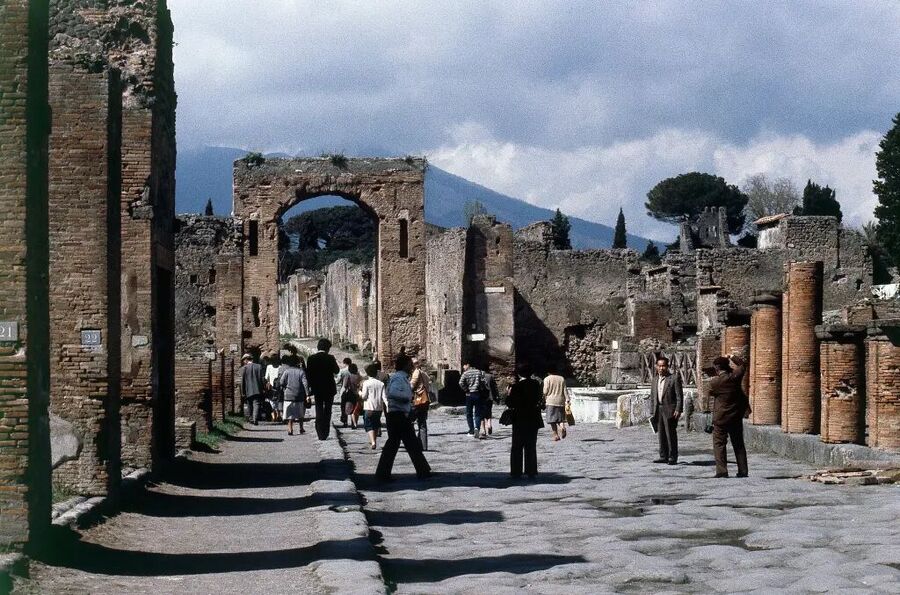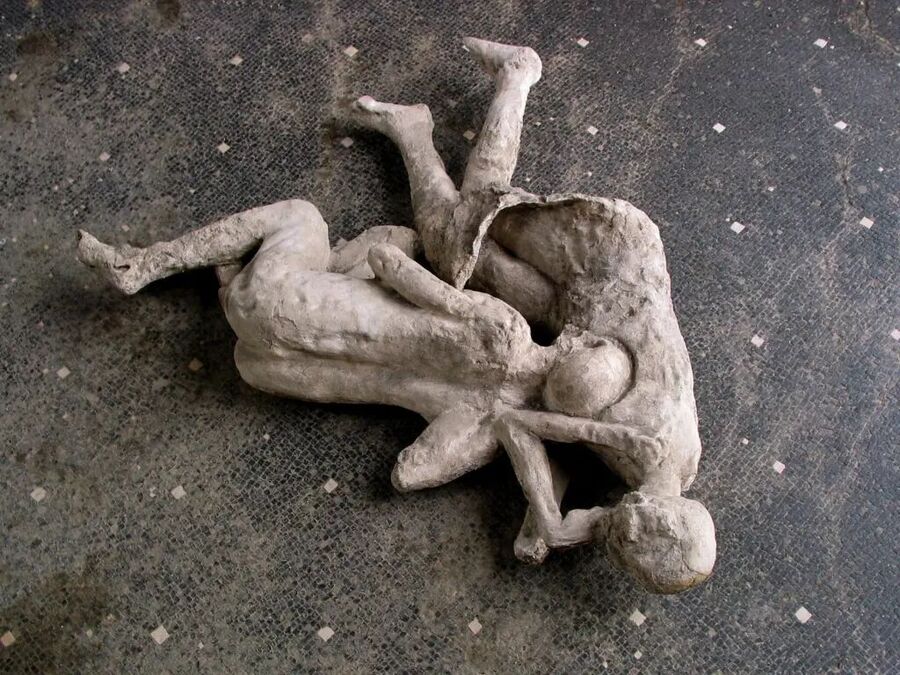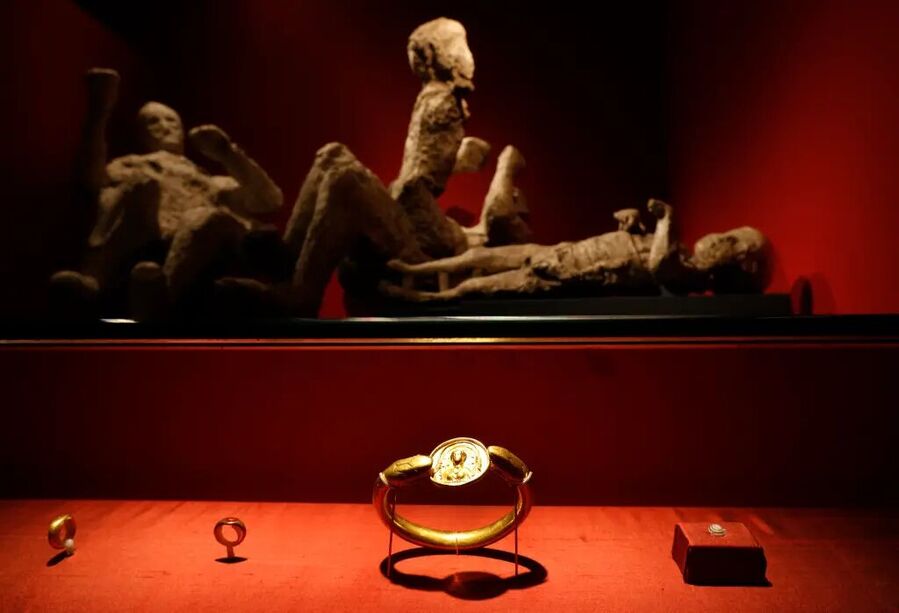
© APPeople walk through the husk of Pompeii, in 1979, 1,900 years after it was engulfed in ash and lava when Mount Vesuvius erupted.
Researchers, including some from Harvard University, focused on fourteen of the castings of bodies that were created in the late 1880s to preserve the remains of the victims of the historic volcanic eruption, according to the study published in the journal Current Biology.

© Archeological Park of PompeiiA study finds that popular narratives about the Pompeii victims are false.
In one notable domicile, known as "the house of the golden bracelet," it was assumed for ages that a mother and child held each other as they were consumed by molten lava.
The house was named for a piece of jewelry worn by the adult with the child. Nearby those remains, another adult and child, which were assumed to be the other members of the nuclear family.

© Archeological Park of PompeiiResearchers extracted DNA from the remains of skeletons to figure out where they were from.
Another famous pair frozen in time were long considered to be sisters locked in embrace. At least one of those people was a genetic male, the study found.

© APAn aerial view of Pompeii, which is in southern Italy near the city of Naples.
"We were able to disprove or challenge some of the previous narratives built upon how these individuals were kind of found in relation to each other," said Alissa Mittnik of the Max Planck Institute for Evolutionary Anthropology in Germany, according to the Associated Press. "It opens up different interpretations for who these people might have been."
"But of course we don't really know, and we can't really say, who these individuals were and how they interacted with each other," Mittnik added, according to The New York Times.The study claims that many of the residents of Pompeii had migrated there from the eastern Mediterranean, from places such as Turkey, North Africa, and Lebanon.
Others were from Sardinia and mainland Italy. Researchers say they were surprised by the genetic diversity, which they attributed to social factors like migrations, slavery and conquest.

© Archeological Park of PompeiiThe study claims that many of the residents of Pompeii had migrated there from the eastern Mediterranean.

© APJewelry found in the ruins of a house in Pompeii, with casts of four victims in the background, on exhibit at the British Museum in central London.
"Some of those from whom we were able to generate genome-wide data showed a more eastern Mediterranean-like genetic ancestry, which could match populations, for example, from the Aegean or from the Levant," Mittnik said, according to the Times. "So, they might be either recent migrants or the descendants of migrants from those regions."In the year 79 AD, Mount Vesuvius erupted, killing ten percent of Pompeii's 20,000 residents — coating their remains and the ruins of the city in ash. That coating preserved the remains of the citizens of Pompeii for nearly two millennia.
Earlier this year, archaeologists at Pompeii discovered two well preserved skeletons — a man and woman who died clutching treasures.
It was also revealed in a study published in Frontiers in Earth Science that the Italian city suffered a significant earthquake which played a significant role in the destruction of Pompeii.
Source link

